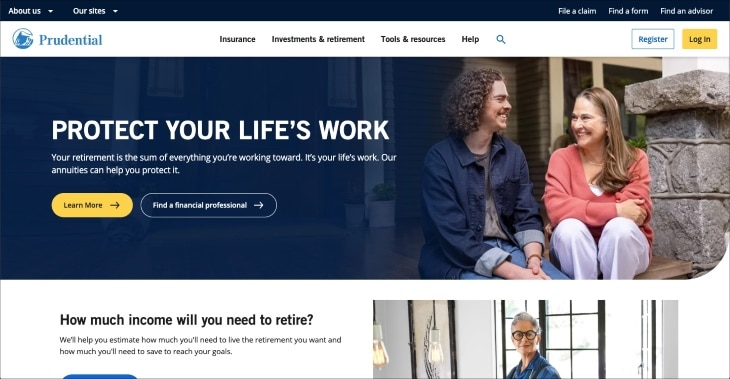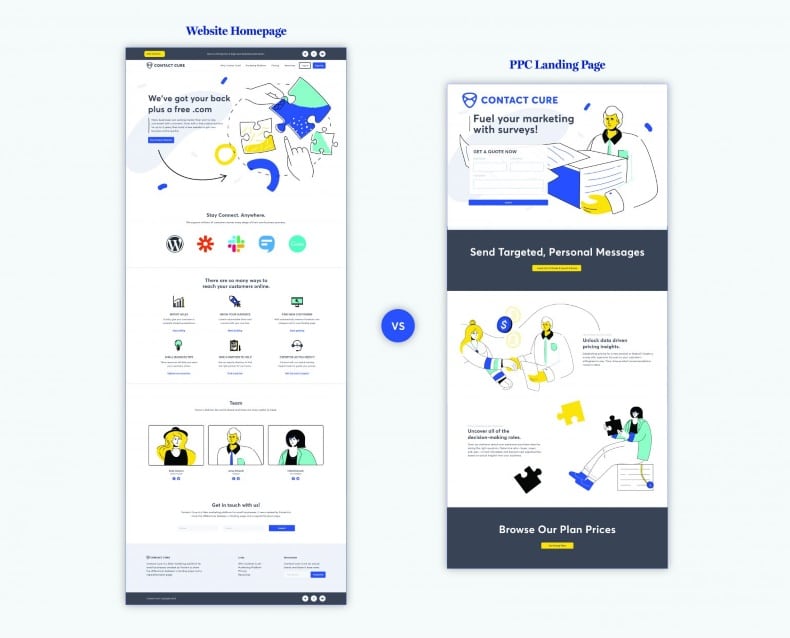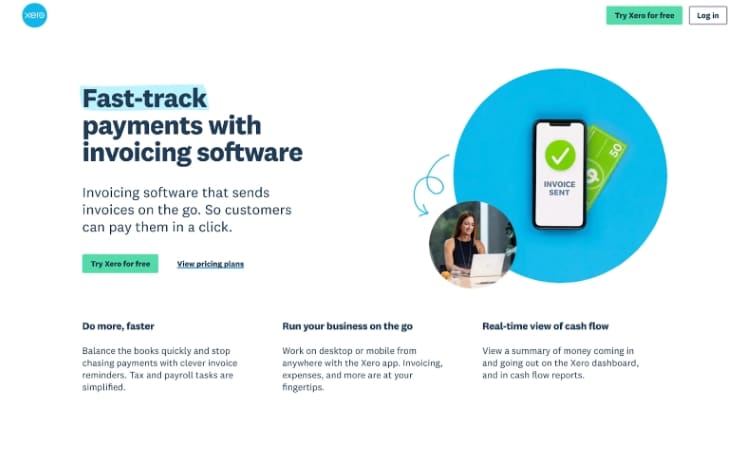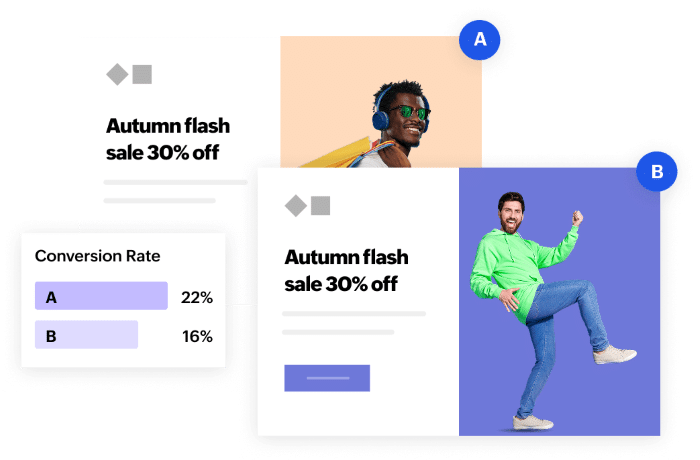Many advertisers experience financial losses not due to poorly designed ads, but rather ineffective landing pages. In my experience, numerous advertisers find themselves uncertain about what elements to include on a landing page, its design, or how to start the process. This guide aims to explore what constitutes a PPC landing page, provide real-life examples, and offer tips to ensure that your ads yield positive returns!
What Is a PPC Landing Page?
A PPC landing page is the webpage that a user arrives at after clicking on a pay-per-click advertisement. In contrast to a regular website, the primary objective of this page is to turn that click into a sale or a potential customer.
In PPC campaigns, advertisers incur a cost each time someone clicks on their advertisements. However, the true success occurs on the landing page. This is where you fulfill the promise of the ad, provide additional information, and prompt users to take action, like signing up, making a purchase, or scheduling a call.
What advantages do PPC landing pages offer?
A landing page created for PPC aims to optimize the value of each click you invest in. When executed effectively, these pages offer numerous advantages that can significantly improve campaign results.
- Greater conversion rates PPC landing pages concentrate on a single message and objective, removing distractions to direct users toward taking action.
- Better quality score A good alignment between your advertisements and the content on your landing page enhances the relevance of the ads, leading to reduced costs and improved placement.
- User experience When visitors click on the ad, they find what they anticipated, which fosters trust, reduces bounce rates, and promotes interaction.
- Clear performance tracking These pages focus on a single campaign, simplifying the process of tracking and analysis. PPC metrics such as conversions and cost per lead.
7 Essential Components of a PPC Landing Page Template
A successful PPC landing page isn’t created by accident; it is designed with a specific framework that directs users towards taking action clearly and intentionally. Below are seven essential components that every PPC landing page template should have to optimize conversions.

1. Hero Copy Texts
When a visitor arrives at your PPC page, it is typically their initial experience with your brand. Having only viewed a short preview in your advertisement, it’s essential that your hero section captures their interest quickly. Strong hero copy achieves three key objectives:
- Matches the ad message If a person clicks on an advertisement for “Affordable Project Management Software,” your main message should directly correspond to that by incorporating the title: “Easy Project Management for Small Teams.”
- Describes your activities and the intended audience. Avoid leaving people in the dark. A hero section that states, “Marketing Automation for Busy eCommerce Brands,” clearly communicates what the product is and who it is intended for.
- Starts with action Use clear and direct language to guide users instead of vague or passive phrases, such as “Start for free,” “Try it today,” or “Schedule your demo now.”
2. Striking Hero Visuals
After capturing attention with the headline, the main image strengthens the message and quickly establishes trust. On PPC landing pages, impactful visuals convey value more quickly than text, particularly for users who tend to skim.
Effective hero visuals serve a purpose:
- Demonstrate the product in use and emphasize the outcomes that customers can anticipate.
- Establish an impression of trustworthiness and expertise.
For instance, a SaaS tool’s landing page might display a screenshot of the active dashboard. This provides prospective users with a preview of what they can expect, helping to reduce any doubts they may have.
3. Challenges Faced by Customers and Their Solutions
The majority of visitors who clicked on your PPC ad did so because they were seeking a solution to a particular issue. This is your opportunity to demonstrate your understanding of their needs. Therefore, your landing page should directly address their concerns.
This part typically summarizes the main challenges that your target customers encounter, before promptly explaining how your product or service addresses those issues.
For example, freelancers may encounter challenges with accounting software such as:
- “Keeping a record of income by hand takes a lot of time.”
Then position your offer as the fix:
- “Create tax reports that are ready to send in just a few seconds.”
4. Characteristics That Differentiate Us from Competitors
This part of a PPC landing page typically emphasizes the product features that set it apart from competing options in the market. It often includes a brief list or grid showcasing important functionalities, benefits, or performance benefits.
The format is typically easily scannable and positioned immediately after the sections discussing pain points and solutions to create a positive momentum toward conversion.
5. Social Proof
Social proof is a widely used feature on PPC landing pages to establish trust and credibility. This part typically contains customer reviews, star ratings, or may feature case studies or usage statistics, such as “Used by over 10,000 businesses.”
The goal is to ensure that potential visitors, who may not be familiar with your brand, understand that actual individuals or businesses have gained from your products or services.
6. Strong CTA Elements
A well-defined and compelling call-to-action (CTA) is essential for transforming a visitor’s interest into a successful conversion. CTAs typically appear several times on a webpage—initially in the hero section, again after highlighting major benefits or features, and once more toward the end. Popular formats for CTAs include prominent buttons with short phrases such as “Start Free Trial,” “Get My Quote,” or “Schedule a Demo.”
7. FAQ to Tackle Hesitation
The FAQ section is commonly located at the bottom of a PPC landing page and is designed to alleviate any final doubts. FAQs are often shown in an expandable design or a straightforward question-and-answer format. It covers typical questions regarding pricing, contract conditions, onboarding processes, or product features.
Developing a PPC landing page that effectively converts involves more than just appealing design; it demands a strategic approach, clear messaging, and a focus on the user experience. Here are the top practices to implement when creating a PPC landing page that yields substantial results!
1. Choose The Right Goal
Before you create your landing page, consider the specific action you want your visitors to take. Do you want them to register for a demo, download an ebook, or complete a purchase? Your entire landing page should be focused on achieving that one objective.
Refrain from overcrowding a single page with too many actions. Including conflicting messages, such as offering an ebook download alongside booking a demo, can result in decreased conversion rates. Focus on a single objective and tailor all elements to reinforce that goal.

2. Ensure that headlines, offers, and calls to action are aligned.
To achieve strong conversions from PPC traffic, your headline, offer, and call to action must not only be consistent but also reflect user intent and support one another at every level of engagement. Here’s how to optimize each element for better performance:
- Headline Reiterate the specific wording or value proposition found in your PPC ad to establish an instant connection and minimize any obstacles.
- Offer Emphasize the value by focusing on the user’s needs or urgency (for instance, “Receive expert assistance within 24 hours” is more impactful than “Begin free trial”).
- CTA Move past using phrases like “Click here” or “Get started.” Your call-to-action should highlight the advantages of the offer, such as “Begin Saving Today” or “Schedule My Free Strategy Call.”
3. Invest time and energy in your design and visuals.
An organized design featuring distinct headings, minimal distractions, and appropriately positioned calls to action helps users concentrate on what’s important. Opt for authentic images rather than generic stock photos; even a straightforward screenshot or a picture from a customer can enhance the credibility of your offer.
For instance, rather than featuring a smiling model to advertise a fitness app, display an actual user monitoring their exercise routine through the app’s interface.
4. Test Trust Signals
Factors such as customer feedback, rating stars, security symbols, and well-known client logos enhance your credibility. However, merely including them isn’t sufficient. It’s important to experiment with their positioning and presentation. For example, positioning a testimonial directly above your call-to-action could yield better results than placing it hidden at the bottom of the page.
A SaaS company might conduct an A/B test comparing one version that emphasizes a media mention such as “Featured on TechCrunch” with another version that displays a user testimonial about customer support, in order to determine which option instills greater confidence.
5. Utilize the Thank You Page
Many advertisers mistakenly view the thank you page as an endpoint, but it actually presents an opportunity to enhance engagement. When someone finishes your form or offer, they are already in a state of high trust and interest, so it’s important to make the most of that moment.
You can provide an additional resource, propose a follow-up action (such as scheduling a call), or even introduce a low-cost upsell. For instance, after someone downloads an ebook about SEO tips, you might encourage them to participate in a free webinar on more advanced strategies. This minor adjustment transforms a simple confirmation page into an engaging component of your sales funnel.
Ensure that your page is optimized for mobile devices.
The majority of PPC clicks originate from smartphones, and users anticipate pages that load quickly and are easy to navigate. If your landing page doesn’t function well on mobile devices, you are wasting your advertising budget.
Picture advertising a flash sale, but the “Buy Now” button is concealed below the visible area on mobile devices. This oversight could lead to a significant loss in conversions. It’s essential to test your page on actual devices, ensuring that the text is easy to read, forms are concise and user-friendly, and important actions are easily seen.
Three Examples of PPC Landing Pages with High Conversion Rates
Gaining insights from real-world examples is one of the quickest methods to grasp what truly enhances the effectiveness of a PPC landing page. Below are eight PPC landing pages that achieve high conversion rates and demonstrate clever strategies in practice.
Overview of Landing Page
Prudential’s “Now What?” campaign directs users from a pay-per-click advertisement that encourages them to “Protect Your Life’s Work” to a streamlined landing page that highlights their annuity solutions. This page strengthens the message of the ad with concise content and a prominent brand identity.
Results
The campaign resulted in a 28% rise in lead submissions and a conversion rate of 12%, nearly twice their typical standard.
What Factors Contribute to an Effective Landing Page
- Strong message match from ad to page
- Statistics and a strong brand reputation foster trust.
- Simple, mobile-friendly design
- Significant for individuals preparing for retirement in an emotional context.
Overview of Landing Page
TikTok’s pay-per-click campaign is aimed at businesses, offering a straightforward promise: “Expand your business using TikTok ads.” The advertisement directs users to a thoughtfully crafted landing page that presents TikTok Ads Manager as a comprehensive tool for campaign creation and management, featuring visuals, subheadings, and detailed explanations of its functionalities.
Results
This campaign is said to have boosted sign-ups for TikTok Ads Manager by 35% compared to the previous quarter, achieving a conversion rate of 14% from ad clicks to registrations.

What Characteristics Define an Effective Landing Page
- A straightforward, benefit-oriented headline and subheadline.
- A comprehensive yet easily understandable overview of advertising tools and targeting choices.
- Several calls to action (“Get Started,” “Register Now”) directing users to sign up.
Overview of Landing Page
Uber’s “Request a ride” PPC campaign leads users to a landing page that encourages immediate action. Rather than providing background information, it prominently features a search bar, urging users to enter their pickup and drop-off locations right away, quickly transforming curiosity into intent.
Results
The campaign reportedly led to a 20% rise in ride requests from paid sources and a 32% decrease in bounce rates, thanks to its highly targeted design.
What Factors Contribute to an Effective Landing Page
- With minimal resistance, users are directed directly to the booking process.
- A single search field serves as the CTA
Essential Insights for Creating a High-Conversion PPC Landing Page
Analyzing how leading brands handle their PPC landing pages reveals a key insight: excellent design by itself is insufficient. In order to transform visitors into tangible business results, your landing page must fulfill various criteria.
Utilize these essential points to ensure your landing page is optimized for success:
· A concise, benefit-oriented headline that accurately conveys the message of your advertisement.
· Ensure that the messaging in your advertisement aligns consistently with the content on your landing page.
· Concentrated user intention with a clear and compelling call to action or course of action.
· Powerful visual narratives conveyed through pictures, animations, or demonstrations.
· Thoughtful placement of CTAs that directs users effectively without causing them to feel overwhelmed.
· A tidy design and mobile-friendly features help minimize bounce rates and maintain user engagement.
· Customized content for various stages of the buying process, particularly for offers requiring a significant commitment.
· Indicators of trust such as data, customer testimonials, or user feedback.
· Feedback loops or user input can enhance experiences and increase conversions gradually.
The most effective PPC landing pages clearly and simply present the next steps in a relevant manner. Take inspiration from these examples to ensure your message is aligned, foster trust, and lead users effortlessly towards conversion!

